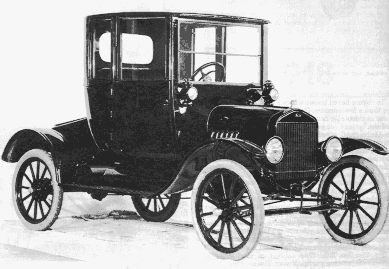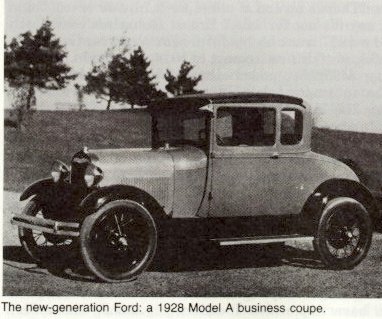Automobile Advertising
Today, we trace a new technology through advertisements. The University of Houston's College of Engineering presents this series about the machines that make our civilization run, and the people whose ingenuity created them.
Historian Pamela Walker Laird traces early automobile ads and finds something surprising: it's the lack of enthusiasm and hyperbole. The first car ads came out just after Barnum -- just after bicycles had swept the country, fueled by ads that said things like, "Columbia riders know naught but pleasure." Never mind the specific virtues of the Columbia bike, its advertisers knew people would be drawn in by the pleasure bicycles offered them.
Early automobile drivers wrote about how "The best part of automobiling ... is the way [you sweep] uphill [and] make gravitation slink away crestfallen, conquered." But that kind of talk didn't make it into advertising copy.
Ads for the 1922 Dorris explained its engine and its choke. They showed a diagram of its fuel system. All that did help teach the public how this new part of American culture worked. But to promote their car, the Dorris people said something you don't find in ads today. "The Car Without a Single Weakness," a banner cries.
Weakness? Is that what buyers should be thinking about? Certainly not! But it was what designers thought about all the time. How to keep the rings from wearing out, the suspension stable, the radiator cool. Laird points out that early auto ads, tightly controlled by people who made autos, were self-indulgent.
Early ads also played for prestige. They told you their buyers were upscale. No Barnum tactics for them. Car ads showed a full view of a static car. People, if any were in the picture at all, were wealthy admirers. "Autocrats' of the Road" cried an early Olds ad. "Ask the man who owns one," said Packard, with the sly hint that that man might be someone beyond your social stratum.
Henry Ford doggedly kept selling to everyman. But he still self-referenced. He showed his factory smokestacks and said, A Giant Who Works for You. But buyers don't care how the product came into being, Laird says. They're interested in the result.
During the 1920s, car ads fell into the hands of advertising professionals, separate from manufacturers. Now the Lexington announces that it was "Built to Stay Young." In a pivotal new ad, we see a girl racing a cowboy in her Jordan automobile. The cars now move, and it is no longer just well-to-do men who drive them.
Not everyone got the message. In 1931 we see a parked black Ford with the message, "The New Ford is an economical car to own and drive." By then, Ford was being left behind by General Motors. We see new Plymouth models, speeding down a country road.
So car advertising evolved with the car itself and with an America being remolded by its new machines. And we might well ask what car ads tell us today. Now they speak less of speed or prestige than they do of comfort and safety. But then, this is a game which I doubt is over yet.
I'm John Lienhard, at the University of Houston, where we're interested in the way inventive minds work.
(Theme music)
Laird, P. W., "The Car Without a Single Weakness": Early Automobile Advertising. Technology and Culture, Vol. 37, No. 4, October 1996, pp. 796-812.

A 1919 Ford high body Model-T coupe
Image courtesy of the Ford archives

The 1928 Model A Ford business coupe
Image courtesy of the Ford archives